
Zak Tebbal for BuzzFeed News
While you might think that an event like the eclipse would easily disprove the Flat Earth theory, that isn't the case at all. A solar eclipse fits well into the plan.
Plenty of people are online discussing the possibility of a Flat Earth. Many are curious about the theory and want to know more, and there's also a sizable amount of trolls who just want to debate or trick Flat Earthers. (There's a reason that the popular Facebook groups have names like “Flat Earth – no trolls”.) Reddit's /r/FlatEarth is mostly full of smart alecks pointing out flaws in the theory, and trolls on Facebook are currently trying to convince Flat Earthers not to use the eclipse glasses and stare right at the sun (don't do this).
I wanted to know how Flat Earth theory addresses eclipses, so I asked in that Facebook group.
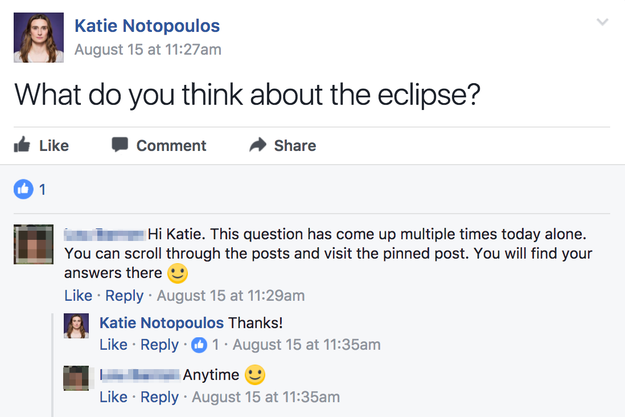
So clearly my question was bad and redundant, so I went looking through the discussion in the group as well as various YouTube videos on the subject.
Here is what I learned about it.
The eclipse is caused by something (probably the same size, maybe not the moon) passing in front of the sun, under a giant dome.
Flat Earth theory suggests that we're living under a giant dome/bubble that covers the entire (flat) Earth. The sun and moon travel and forth across dome ceiling, which is why we have sunset/sunrise. So an eclipse just means that something – maybe the moon, maybe another planet – passes in front of the sun during its regular travels across the dome sky. Same with lunar eclipses.
The sun and moon travel around two tracks under the dome. Occasionally, these cross paths.
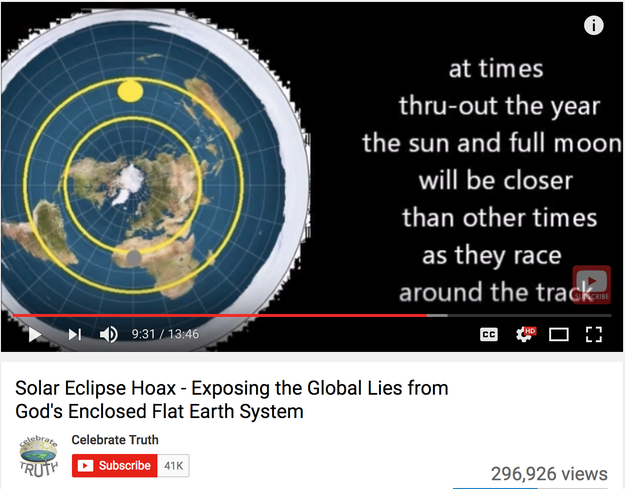
To Flat Earthers, the key is pointing out flaws with the traditional globe-centric eclipse models.
Most of the talk on Facebook and YouTube about the solar eclipse focuses on the various problems with the animations and graphics put out by “globe jockeys” like NASA and other mainstream places, like, well, BuzzFeed.
The whole thing is exposed as a lie by the shadow issue.
In a traditional globe model, the size of the shadow that gets the full eclipse (otherwise known as the “path of totality”) is small – much smaller than the size of the moon. Flat Earthers point out that this is seriously flawed – if the globe theory was true, then the shadow should be much much bigger.
This shows how the globe model wouldn’t really produce the right kind of shadow:
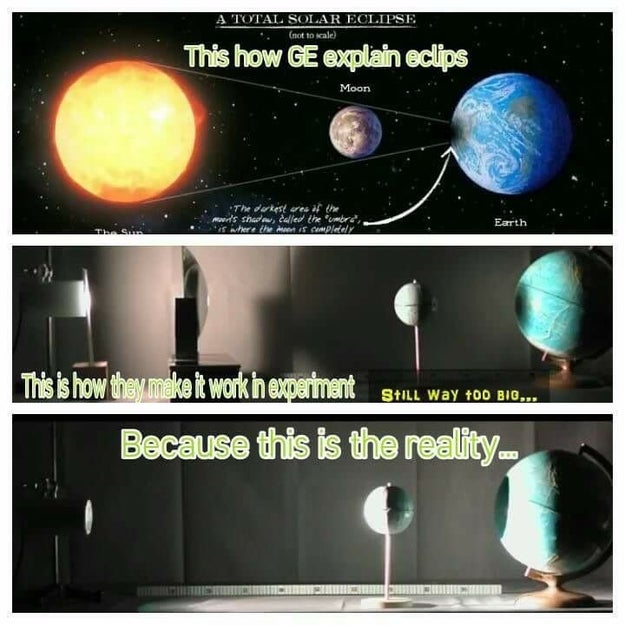
Everyone knows that if you set up a flashlight for a shadow puppet show, the farther away you go, the smaller your shadow gets.

Also, it's pretty fishy that the sun and the moon look the same size to us.
Globe theory says that eclipses “work” because it's a happy coincidence that the sun is about 400 times farther away from the earth than the moon, and the moon is about 400 times narrower than the sun, so from earth they look about the same size. But isn't there a much more simple explanation? Such as… they are two equally sized objects the same distance away?
The eclipse path is explained by this simple black circle over the flat earth map.
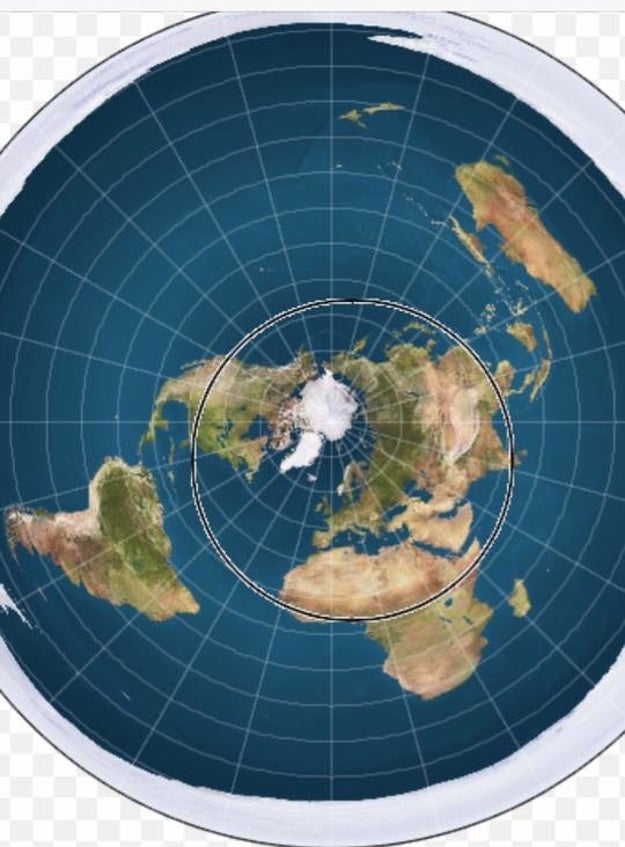
Also, the eclipse is caused by a dark planet called Rahu, not the moon.
In the Hindu tradition, Rahu is the head of a sun-eating snake (solar eclipses are caused by Rahu eating the sun, in this mythology). According to the astrology system described in a Sanskrit text called the Vedas (“Vedic astrology”), Rahu is the name of one of the planets that circle the Earth.
This means that what we're seeing in a solar eclipse is not the moon passing in between the sun and Earth, but the planet Rahu pass in front of the sun, blocking out the light. Flat Earthers don't believe a snake is eating the moon; they believe the eclipse is caused by planet named after the snake-eating deity.
Ok, look just throw out everything you know about the moon.
Forget the moon landing, obviously. For the Rahu theory, the moon isn't illuminated from reflection from the Earth or sun, it's a thin screen illuminated from behind by a rotating light source. Some people believe the moon's light source is a laser instead of the sun.
This Vedic astrology chart shows Rahu at 24 degrees, perfectly ready to block out the sun on Aug 21.
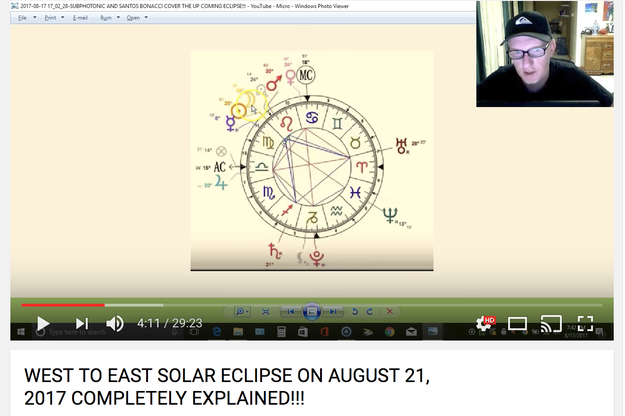
So there you have it. Feel free to make up your own mind.
See all of BuzzFeed’s eclipse stories here!
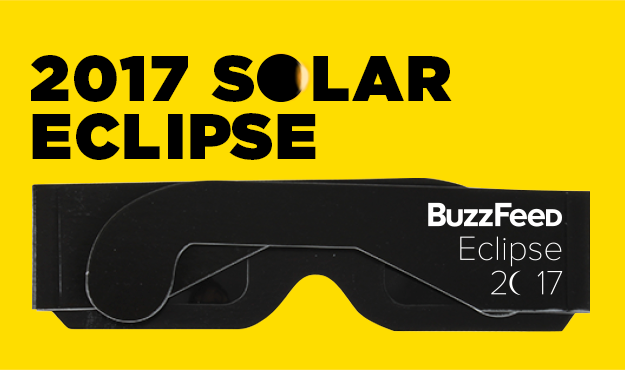
Quelle: <a href="Here's What Flat Earthers Think About The Eclipse“>BuzzFeed
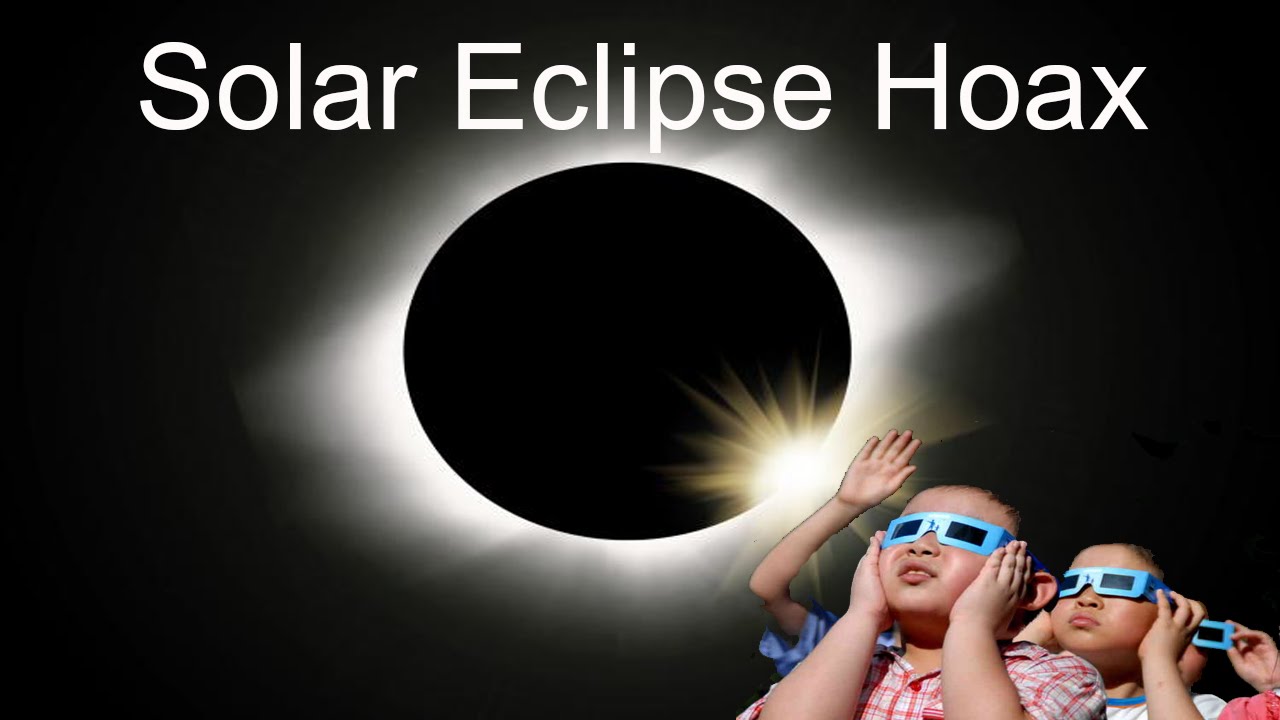
Published by